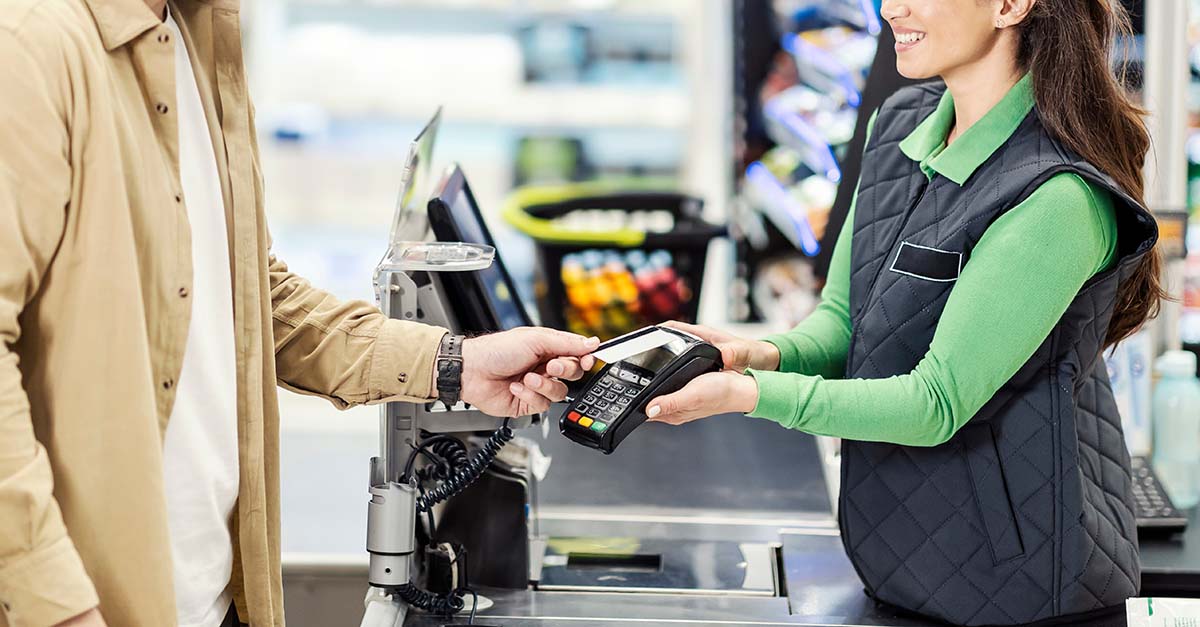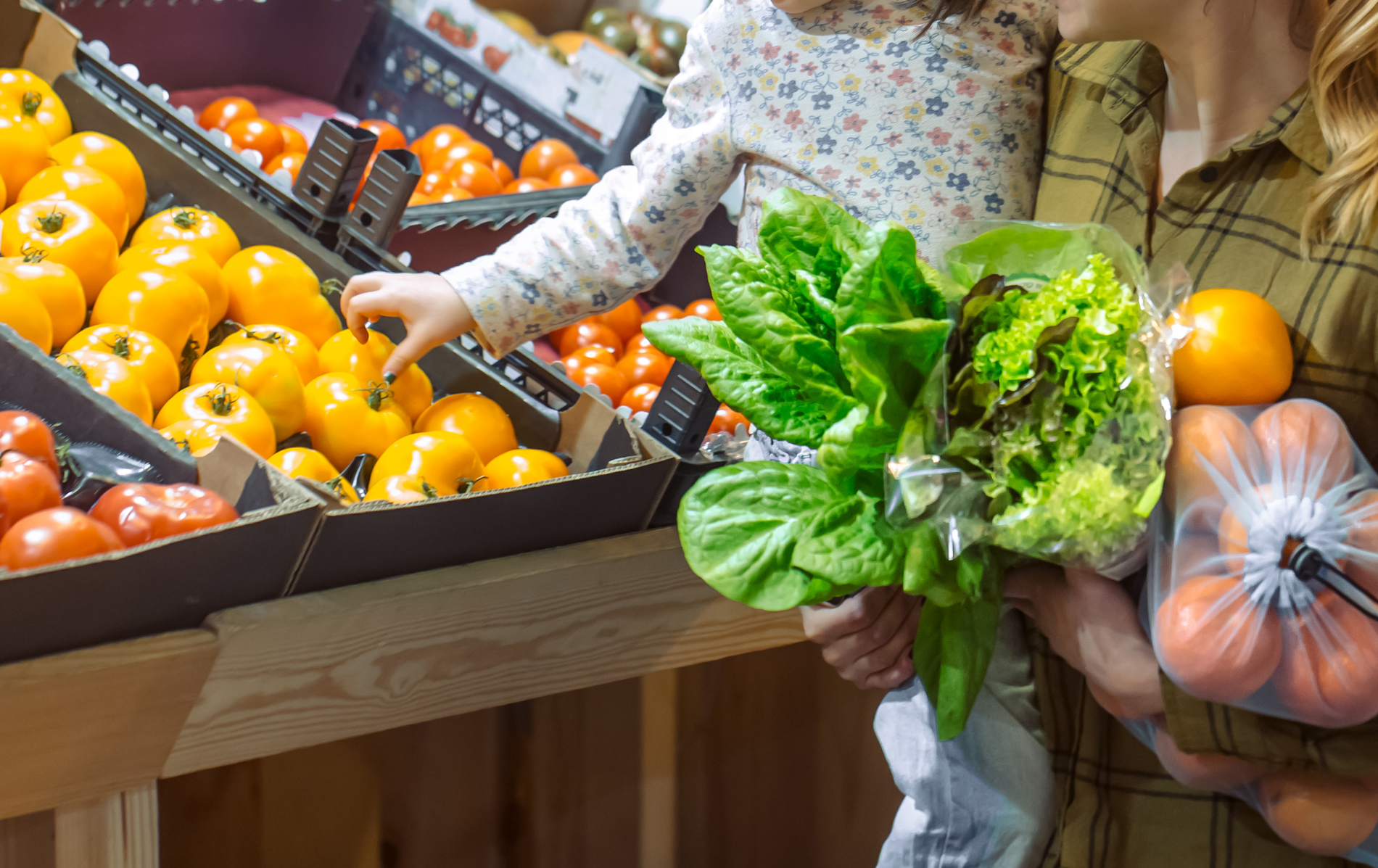Food bar comeback: How hot bars and salad bars can make up for rising costs
Diners are trading down from full-service restaurants, and grocers can take advantage with high-margin food bars

The Upside Team
Food bar comeback: How hot bars and salad bars can make up for rising costs

In September 2023, spending per grocery visit sat about 3% lower year-over-year, the second consecutive month that was the case. Total transactions were also down 5% year-over-year.
In the midst of sustained decreases in total transactions and spending per visit, grocers are getting smart about where they dedicate precious resources. We analyzed data from 64 Upside grocery partners and learned that hot buffets and salad bars could be a key area of growth.
Even as overall sales lag, self-serve food bars have become preferred choices for grocery store shoppers. Hot buffet and salad bar transactions have increased significantly — compared to September 2022, hot buffet transactions were up 37% in September 2023, and salad bar transactions were up 11%.

This data highlights a significant opportunity for grocers to expand their self-serve stations.
But why is it that hot buffets and salad bars work for retailers?
Why are these self-serve bars so important?
Hot buffets and salad bars are high-margin stations in a world of razor-thin margins.
Most items on grocery store shelves have a gross profit margin between 10% and 40%. In contrast, salad bars can turn a higher profit margin — in some cases, up to 70% — before factoring in labor and overhead costs. Profitable Venture suggests that a well-stocked salad bar (one that includes vegetables, cold pasta, soups, breads, and more) can generate $25,000 to $30,000 per month in revenue.
Though it might feel like a lifetime ago, it was only a few years back that the future of the self-serve food bar looked bleak. For all of 2020 and a large portion of 2021, hot buffets and salad bars were completely shuttered due to COVID restrictions. By the summer 2021, these bars began to open again, and shoppers greeted them eagerly — at the time, Jonna Parker, principal of IRI’s Fresh Center of Excellence, said the resurgence was occurring because people “are starting to get tired of cooking from scratch.”
In the present, hot buffets and salad bars have maintained that popularity due in part to the “trade down” effect that’s occurring in the restaurant space. Restaurant owners’ operating costs are increasing, and in turn, they’re increasing their menu prices — but those price hikes are turning away some budget-conscious customers. Rather than dining out less, Upside has found that those customers are increasingly trading down from full-service restaurants (FSRs) to quick-service restaurants (QSRs), evidenced by a 3% increase in foot traffic year-over-year at QSRs in September 2023.
As self-serve food bars are experiencing a similar lift in transactions, the current increase in sales is not due to inflation — the price per item in hot buffets has held steady, and the price per item at the salad bar has actually declined. It’s just that shoppers are picking up more items from these self-serve stations, and doing so more frequently.
How can grocery stores offset rising costs?
It makes sense that grocery stores pay particular attention to their food bar strategies to offset rising food costs, labor shortages, supply chain issues, and other operational challenges. Grocers want to do everything they can to prevent passing the cost burden onto customers.
Here are some tips to increase sales and drive customers to high-margin food bar items:
- Find Customers Where They Are. Your in-house loyalty or rewards programs do a great job retaining loyal customers. To find and acquire new customers, you meet customers where they are: on the go and on their mobile phones.
- Frequently Change Menu Options. Changing meal offerings and food options frequently can keep customers interested and coming back. Of course, keep the most popular items, but try new flavors, combinations, and regional fare.
- Showcase your efforts. Though our sensitivity around getting sick has diminished since 2020, many customers are still wary about self-serve food bars. Let them know what you’re doing to keep food areas safe.
- Offer promotions. Some customers like to buy food bar items to supplement their meals, bring to gatherings, or store as meals for the week. Use personalized promotions to target the right customer at the right time to get them to higher-margin items, in a way that’s guaranteed to earn you profit.
One thing is certain: grocery stores are becoming much more capable of quickly adapting to customers’ needs as external forces come into play. Retailers are leveraging what they’ve learned and are determining which customer behaviors are here to stay.
Get more industry data and see how Upside can help you grow.
Share this article:
The Upside team is made up of data scientists and industry experts who are passionate about delivering empowering content to our readers. With a focus on providing practical insights and meaningful perspectives, we create engaging materials across a wide range of topics. From exploring industry trends and offering expert analysis to sharing useful tips and inspiring ideas, our team works diligently to provide you with the information you need to thrive.
Request a demo
Request a demo of our platform with no obligation. Our team of industry experts will reach out to learn more about your unique business needs.
















